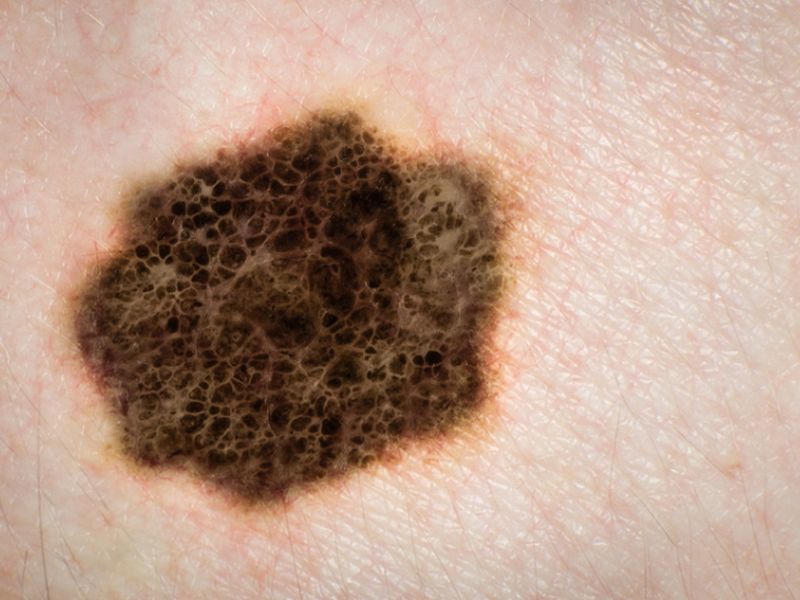THURSDAY, May 31, 2018 (HealthDay News) — A computer can beat even highly experienced dermatologists in spotting deadly melanomas, researchers report.
The study is the latest to test the idea that “artificial intelligence” can improve medical diagnoses.
Typically, it works like this: Researchers develop an algorithm using “deep learning” — where the computer system essentially mimics the brain’s neural networks. It’s exposed to a large number of images — of breast tumors, for example — and it teaches itself to recognize key features.
The new study pitted a well-honed computer algorithm against 58 dermatologists, to see whether machine or humans were better at differentiating melanomas from moles.
It turned out the algorithm was usually more accurate. It missed fewer melanomas, and was less likely to misdiagnose a benign mole as cancer.
That does not mean computers will someday be diagnosing skin cancer, said lead researcher Dr. Holger Haenssle, of the University of Heidelberg in Germany.
“I don’t think physicians will be replaced,” Haenssle said.
Instead, he explained, doctors could use artificial intelligence (AI) as a tool.
“In the future, AI may help physicians focus on the most suspicious skin lesions,” Haenssle said.
A patient might, for instance, undergo whole-body photography (a technology that’s already available), then have those images “interpreted” by a computer algorithm.
“In the next step,” Haenssle explained, “the physician may examine only those lesions labeled as ‘suspicious’ by the computer.”
Doctors already do skin exams with the help of a technology called dermoscopy — where a hand-held device is used to light and magnify the skin. Haenssle said AI could again be used to help analyze those images.
Dr. Mary Stevenson is an assistant professor of dermatology at NYU Langone Medical Center in New York City.
She agreed that the technology is not going to replace doctors, but could serve as an “aid.”
There are still questions to be answered, according to Stevenson, who was not involved in the research. For one, she said, this study focused only on differentiating melanoma from benign moles — and there is more to skin cancer diagnosis than that.
For the study, Haenssle’s team recruited 58 dermatologists from 17 countries. Over half had more than five years of experience and were considered “expert” level.
First, the doctors examined 100 dermoscopic images of either melanomas or harmless moles.
Four weeks later, they viewed those images and were given more information about the patients — such as their age and position of the lesion on the body. That more closely reflected what doctors work with in the “real world.”
In the first phase, the doctors accurately caught melanomas nearly 87 percent of the time, on average; they correctly identified moles about 71 percent of the time.
The computer, however, did better: When it was tuned to have the same level of accuracy as doctors in detecting benign moles, the computer caught 95 percent of melanomas.
The doctors boosted their accuracy when they also had information about the patients. They caught 89 percent of melanomas, and accurately identified benign moles about 76 percent of the time.
The computer still outperformed them, though: At that same level of accuracy for catching melanoma, the computer correctly diagnosed about 83 percent of moles.
Haenssle said that in some parts of Germany, doctors are already using the algorithm tested in this study — in software sold by the company FotoFinder Systems GmbH. He has received fees from the company and others that market devices for skin cancer screening.
For now, traditional skin exams remain the standard of care.
Stevenson said she suggests people get one head-to-toe exam to inspect the skin for suspicious growths — and then talk to their doctor about how to follow up.
“I also recommend getting in front of a mirror once a month to do a self-exam,” Stevenson said.
The point is to spot any changes in the size, shape or color of a mole or other dark spot on the skin. According to Stevenson, some warning signs of melanoma include asymmetry in a growth, as well as irregular borders, uneven coloring and a large diameter (larger than a pencil eraser).
“When melanoma is caught early,” Stevenson said, “it is highly curable.”
More information
The Skin Cancer Foundation has a guide on melanoma skin cancer.
Copyright © 2025 HealthDay. All rights reserved.

